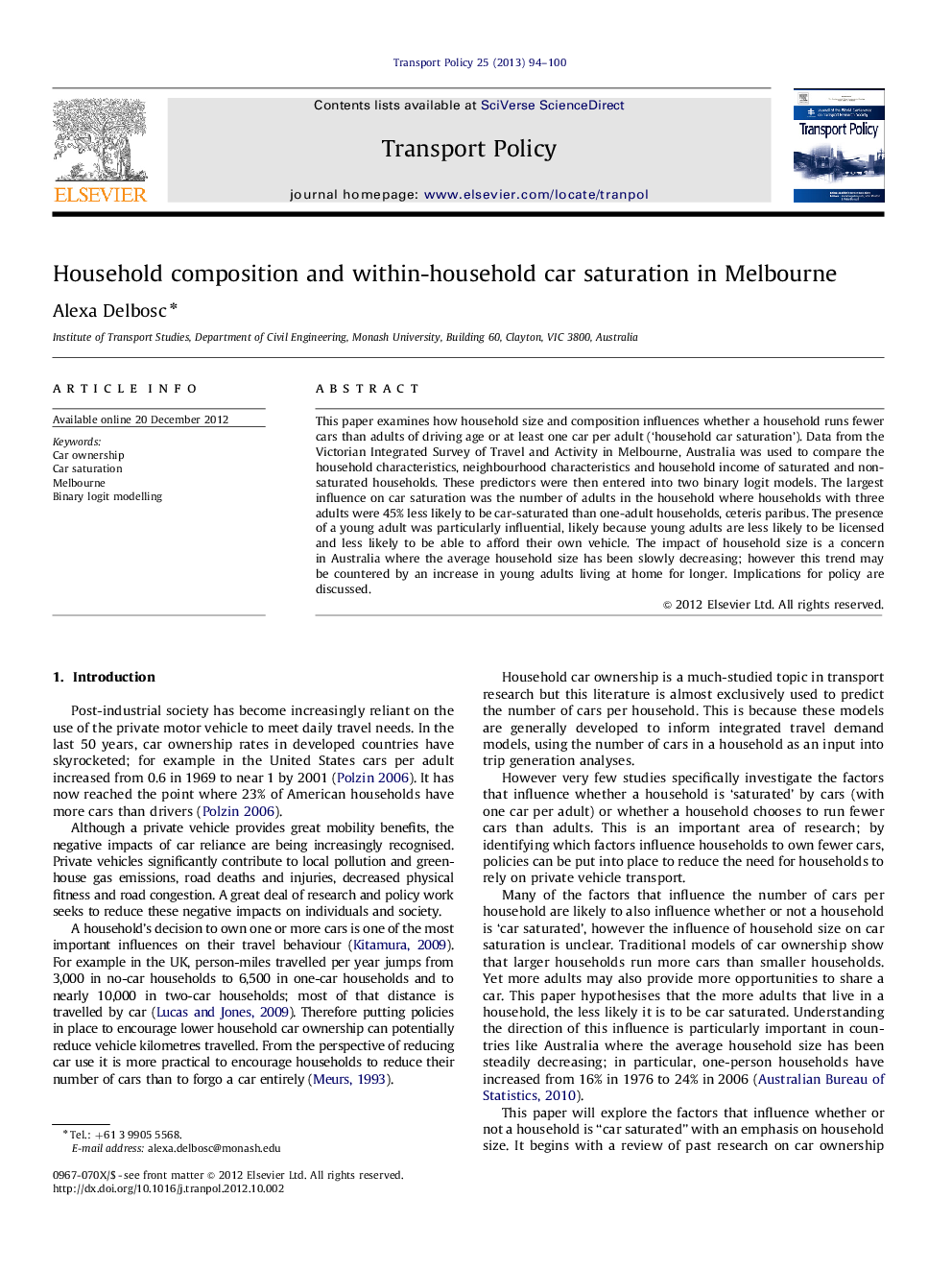| Article ID | Journal | Published Year | Pages | File Type |
|---|---|---|---|---|
| 1065010 | Transport Policy | 2013 | 7 Pages |
This paper examines how household size and composition influences whether a household runs fewer cars than adults of driving age or at least one car per adult (‘household car saturation’). Data from the Victorian Integrated Survey of Travel and Activity in Melbourne, Australia was used to compare the household characteristics, neighbourhood characteristics and household income of saturated and non-saturated households. These predictors were then entered into two binary logit models. The largest influence on car saturation was the number of adults in the household where households with three adults were 45% less likely to be car-saturated than one-adult households, ceteris paribus. The presence of a young adult was particularly influential, likely because young adults are less likely to be licensed and less likely to be able to afford their own vehicle. The impact of household size is a concern in Australia where the average household size has been slowly decreasing; however this trend may be countered by an increase in young adults living at home for longer. Implications for policy are discussed.
► It is important to understand what influences households to own as many cars as adults (‘car saturation’). ► Household size was by far the largest influence on car saturation. ► The presence of young adults is more likely to reduce car saturation than the presence of older adults. ► The presence of more than one child was a lesser influence on car saturation.
